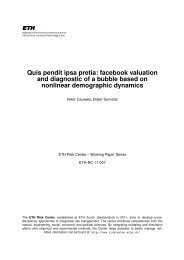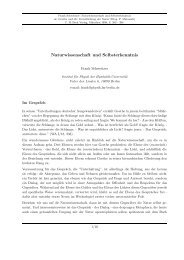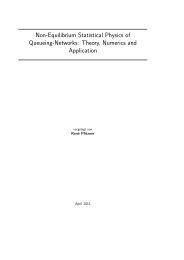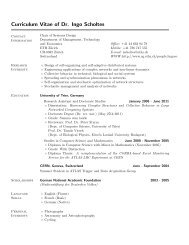Using Laboratory Experiments to Study Law and Crime - Chair of ...
Using Laboratory Experiments to Study Law and Crime - Chair of ...
Using Laboratory Experiments to Study Law and Crime - Chair of ...
Create successful ePaper yourself
Turn your PDF publications into a flip-book with our unique Google optimized e-Paper software.
The experimental results provide reason <strong>to</strong> think that the focal point mechanism operatesas theorized. Does this mechanism help <strong>to</strong> explain what we observe in the field? Ginsburg <strong>and</strong>McAdams (2004) apply the theory in the context <strong>of</strong> international law <strong>to</strong> explain why nationsfrequently comply with decisions <strong>of</strong> international bodies such as the International Court <strong>of</strong>Justice even when those institutions have little power <strong>to</strong> impose sanctions. Ginsburg <strong>and</strong>McAdams argue that court decisions provide “focal points” that clarify expectations. Theseclarifications influence behavior. A long-st<strong>and</strong>ing terri<strong>to</strong>rial conflict between Denmark <strong>and</strong>Norway over Greenl<strong>and</strong>, for example, was resolved simply by the Permanent Court <strong>of</strong>International Justice rendering a decision in favor <strong>of</strong> Denmark. In response <strong>to</strong> the decision,Norway immediately withdrew its claim.Ginsburg <strong>and</strong> McAdams (2004) review the docket <strong>of</strong> the International Court <strong>of</strong> Justice<strong>and</strong> find support for the theory. In cases in which the structure <strong>of</strong> incentives was like that in aHawk-Dove Game – that is, there was some element <strong>of</strong> both conflict <strong>and</strong> coordination – theyfound that the International Court <strong>of</strong> Justice tended <strong>to</strong> be successful. It was less successful,however, in situations in which parties had, in effect, already chosen Hawk-Hawk strategies.Thus it was less effective in disputes involving armed conflict. But, as the theory suggests, itaffected parties’ behavior in situations that had some element <strong>of</strong> coordination.In this series <strong>of</strong> studies, McAdams <strong>and</strong> his colleagues propose a theory, test the theoryusing several labora<strong>to</strong>ry experiments, <strong>and</strong> then apply the theory outside the labora<strong>to</strong>ry. Thesestudies taken <strong>to</strong>gether provide stronger evidence <strong>of</strong> the expressive power <strong>of</strong> law than any onestudy alone. Further, the experiments provide evidence that would be very difficult <strong>to</strong> obtain inthe field.DISCUSSIONAlthough in many ways human society is increasingly cooperative <strong>and</strong> civilized, crimepersists. Relying on <strong>of</strong>ficial crime statistics, surveys, observational data, <strong>and</strong> field experiments,much <strong>of</strong> the research in criminology <strong>and</strong> law provides evidence <strong>of</strong> the correlates <strong>of</strong> crime.24







